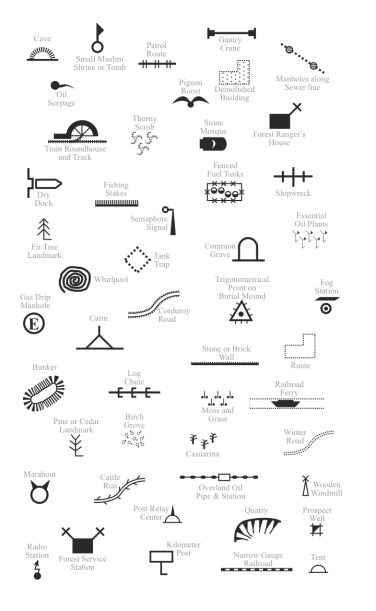Map: “a spatial representation of reality”
- spatial: consisting of at least two dimensions and usually referring to geographic space
- representation: something that stands for something else
- reality: “The totality of all things possessing actuality, existence, or essence” (The American Heritage Dictionary, 2002). Origin (etymology): 1550, originally a legal term in the sense of “fixed property.”
•••••
Less is More:
- maps simplify & make “reality” easier to understand




•••••
Maps show us what we cannot see:

- temperature: we feel, not see, temperature
- maps are synesthetic
•••••
Maps can show just about anything:
- much more than just road maps!

- Who is Elvis?
•••••
Abstraction and Categories
Humans have the ability to think abstractly and develop categories
- abstract: having conceptual rather than physical existence
- categories: a unit or a subunit of a larger whole made up of members sharing one or more characteristics

What goes into a category can vary from person to person and culture to culture

Common categories of human and environmental stuff on maps:
- examples)
Categories simplify our environment so we can understand it easily
- a contradiction?
- we understand better and faster by simplifying and categorizing the world, and how we simplify and categorize varies from person to person and culture to culture
- maps are an important means of simplifying and categorizing things so we can understand them
•••••
Symbols and Representation
Symbols are at the basis of natural languages (eg., English), math, statistics, pictorial communication (such as drawings, maps, graphs)
Symbol: A thing representing something else because of relationship, association, convention, or resemblance.

- Semiotics: the study of symbols
Common symbols on maps:
- examples) based on our categories (above)
Diversity of symbols on maps:

Resources
[…] What’s a Map? […]